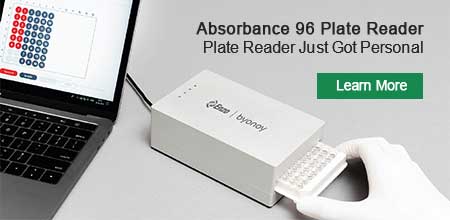The CD40L, soluble (human) ELISA kit (high sensitivity) is a complete assay for the quantitative determination of soluble human CD40L (CD154) concentration. This kit provides an ultra-sensitive measurement of CD40L, detecting as little as 0.005ng/ml. This kit is to be used with cell culture supernatants, serum and other body fluids from human origin.
Product Details
| Alternative Name: | CD154, TNFSF 5 |
| |
| Sensitivity: | 0.005ng/ml (range 0.08 to 5ng/ml) |
| |
| Assay Time: | 3 hours + 10 minutes |
| |
| Applications: | ELISA
|
| |
| Application Notes: | For the quantitative determination of soluble human CD40L (CD154) in cell culture supernatants, serum and other body fluids. |
| |
| Wavelength: | 450 nm |
| |
| Species reactivity: | Human
|
| |
| Quantity: | 96 wells (~80 tests). |
| |
| Handling: | Store controls at -20°C. Store rest of the kit at +4°C. |
| |
| Shipping: | Blue Ice |
| |
| UniProt ID: | P29965 |
| |
| Regulatory Status: | RUO - Research Use Only |
| |
| Compatibility: | This product is compatible with the Absorbance 96 Plate Reader.
 |
| |
Product Literature References
Increased levels of soluble CD40L in African tick bite fever: possible involvement of TLRs in the pathogenic interaction between Rickettsia africae, endothelial cells, and platelets: J.K. Damas, et al.; J. Immunol.
177, 2699 (2006),
Abstract;
Soluble CD40 ligand in acute and chronic heart failure: T. Ueland, et al.; Eur. Heart J.
26, 1101 (2005),
Abstract;
Measurement of soluble P-selectin and soluble CD40 ligand in serum and plasma: J. Thom, et al.; J. Thromb. Haemost.
2, 2067 (2004),
Abstract;
Increased soluble and platelet-associated CD40 ligand in essential thrombocythemia and reactive thrombocytosis: J.F. Viallard, et al.; Blood
99, 2612 (2002),
Abstract;
Levels of soluble CD40 ligand (CD154) in serum are increased in human immunodeficiency virus type 1-infected patients and correlate with CD4(+) T-cell counts: N.V. Sipsas, et al.; Clin. Diagn. Lab. Immunol.
9, 558 (2002),
Abstract;
CD40-ligand stimulates myelopoiesis by regulating flt3-ligand and thrombopoietin production in bone marrow stromal cells: A. Solanilla, et al.; Blood
95, 3758 (2000),
Abstract;
Related Products











